Marine Life & Conservation
Pierre-Yves Cousteau’s Galapagos: Final Dives
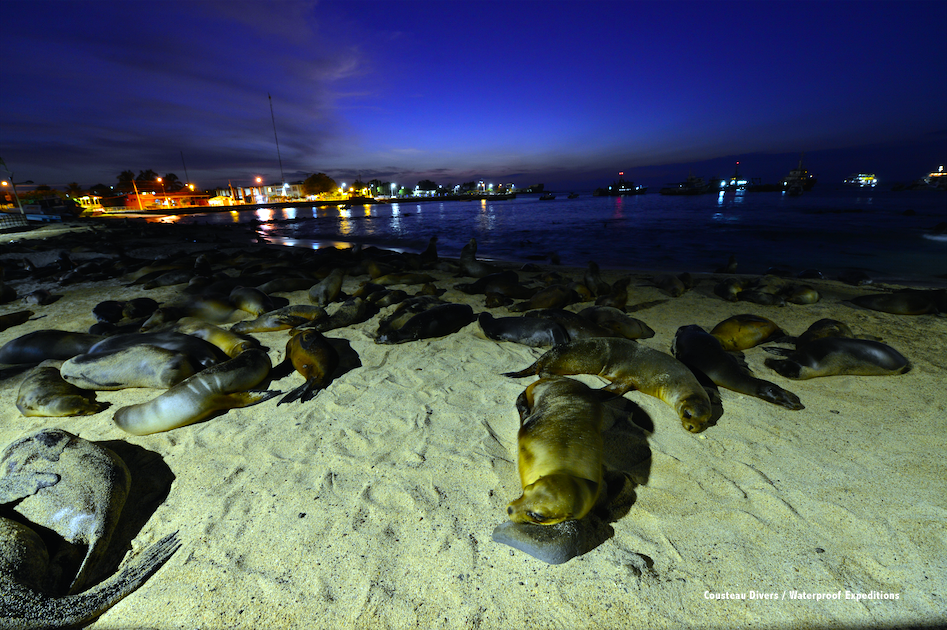
Read Part 2 of Pierre-Yves’ Galapagos blog here.
One week in San Cristobal followed by a second diving expedition. Nothing scheduled but sunsets the first week. The waterfront of San Cristobal is forever bathed in the pungent smell of sea lion body odour. The Loberia and Punta Carola offer beautiful waves and vast spaces of peaceful wilderness. With nothing else to do, I decide to investigate further the establishment of the new marine sanctuary of Wolf and Darwin and its impact on the local population.

I make my way to the Loberia, a beautiful rocky coast with beaches and powerful waves, to watch the sunset. I take a taxi to go there and back and ask the cab driver about the new sanctuary. He says many families on San Cristobal are fishermen, and that some of them used to go to Wolf and Darwin. He says there was a fishermen’s protest in the village that very morning in town. They are claiming their right to fish in Wolf and Darwin. He says that the three representatives of the fishermen cooperatives signed the agreement to make the sanctuary without consulting with their peers. He mentions rumors of bribery.
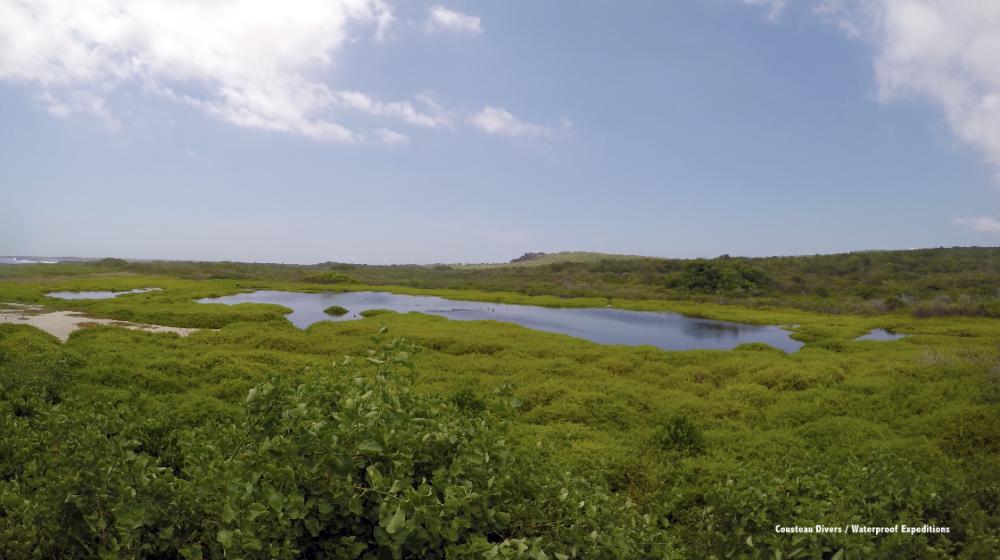
I head to the mayor’s office to get his opinion about the new sanctuary. He says the sanctuary was imposed onto the fishermen, that they were not sufficiently consulted or compensated, and that they should be considered in these kinds of decisions. Regarding tourism in general, he says he wishes the marine activities related to the sanctuary benefitted the people of the islands more than they do, implying that foreign companies capture much of that value.
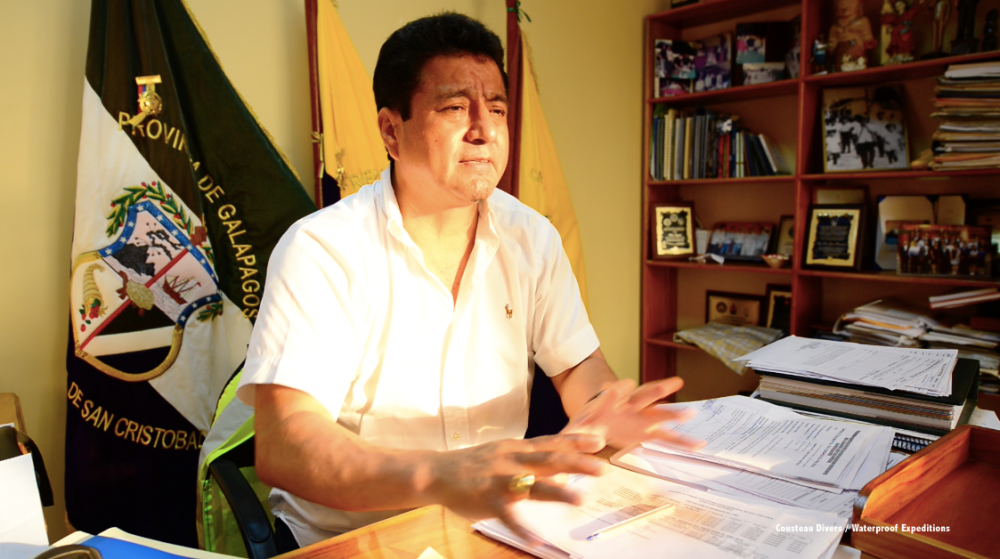
The next day I have lunch with Roberto Ochoa, a conservationist with marketing background who works with the ministry of tourism. He was part of the initiative to declare Wolf and Darwin no-take zones and joined their expedition earlier this year. According to their observations over 40 days, these two islands have the highest shark abundance in the world! He says the fishermen were not only consulted, they were also compensated for not fishing, subsidized to ease their reconversion to another professional activity. Later, a meeting with representatives of the ministry of environment of Ecuador reveals that much effort was put into building local consensus. They are shocked to hear about the protests, and say that the same people who are protesting signed the documents agreeing to the sanctuary.

Why are there two opposite stories being told? How come the fishermen were demonstrating? Did the consultation and compensation package miss out some key stakeholders? Did the news of a compensation package suddenly turn the inhabitants of the island of San Cristobal into fishermen? The week goes by and I am unable to find an answer. Enforcing the sanctuary will be as hard as it is remote and uninhabited. Raising awareness and educating the local population to the world-class value of their natural resources will be extremely important in order to foster stewardship. The presidential signature last week marked the beginning of an endless endeavor, not the landmark of an accomplishment.
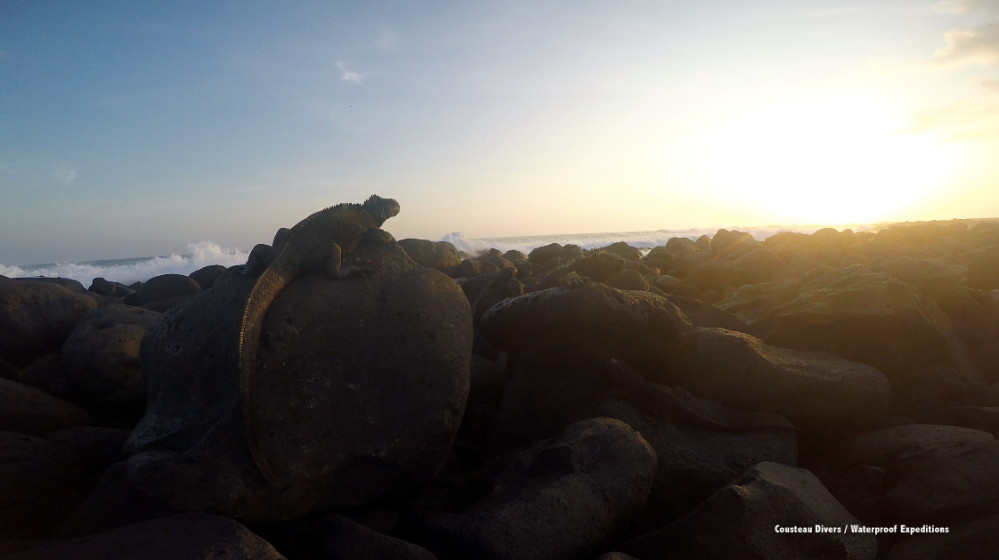
Seven sunsets later, I’ve met kind and interesting people in San Cristobal. I’ve seen sea lions crash salsa lessons and marine iguanas basking on black rocks, spitting seawater from their nostrils. I spoke to the students of San Francisco University about marine conservation issues and a small group stayed afterwards to discuss possible solutions out of the mess we’re in. Dying oceans… a collateral damage of our materialistic hypnosis. The silver bullet, if there is one, may reside in cultural and technological innovation. We also discuss bottom-up conservation and the empowerment of local communities to manage their resources, the decentralisation of environmental decision-making. It is inspiring to see an enthusiastic and energetic young generation, motivated to make the world a better place.
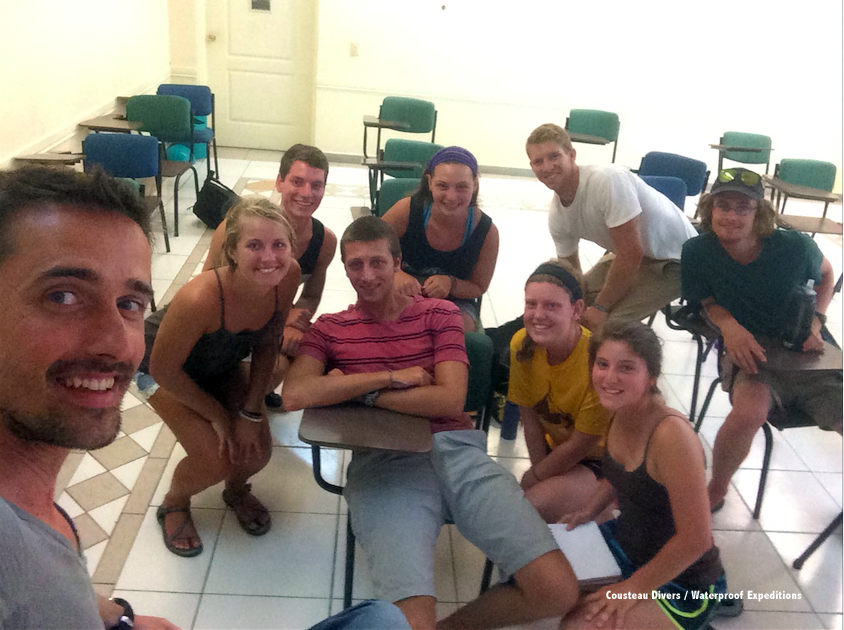
Finally, I board the Galapagos Sky again and I meet the new passengers of this second expedition. They are mostly Indians from Bombay, from a variety of professional backgrounds, but also an English mathematician and banker couple and an American physicist with his retired army friend. Discussions on board range from spirituality and shamanism to quantum physics. New questions arise from our discussions… How can behavioral change be fostered in emerging economies, based on lessons learned from western countries? How can environmental stewardship compete for brain bandwidth, using the phenomenal behavioral conditioning machinery that is advertising and marketing. One day perhaps, faced with environmental emergency, mankind will use the powerful tools that created the problem to steer the ship.

A few days later, we are diving again, in what I now feel is the richest, most extraordinary dive site in the world. Every instant of each dive in the Galapagos Islands, my attention is captured by some agitation of their untamed ecosystem. Everywhere around me, life is lush and surprising.

Near the island of Fernandina, the sea’s surface is littered with scavenging marine iguanas, breathing turtles and sunbathing sea lions. I befriend a puffer fish that follows me during a whole dive. A whale exhales in the distance.

In Isabella, sea lions follow in my blind spot to use the video lights to hunt. One of them photo-bombs a test-shot: I did not see it for the whole dive, but discover it in one of my pictures… In Bartolome, I lose orientation as I enter a cloud of dozens of Mobula rays, feeling as though I am one of them.
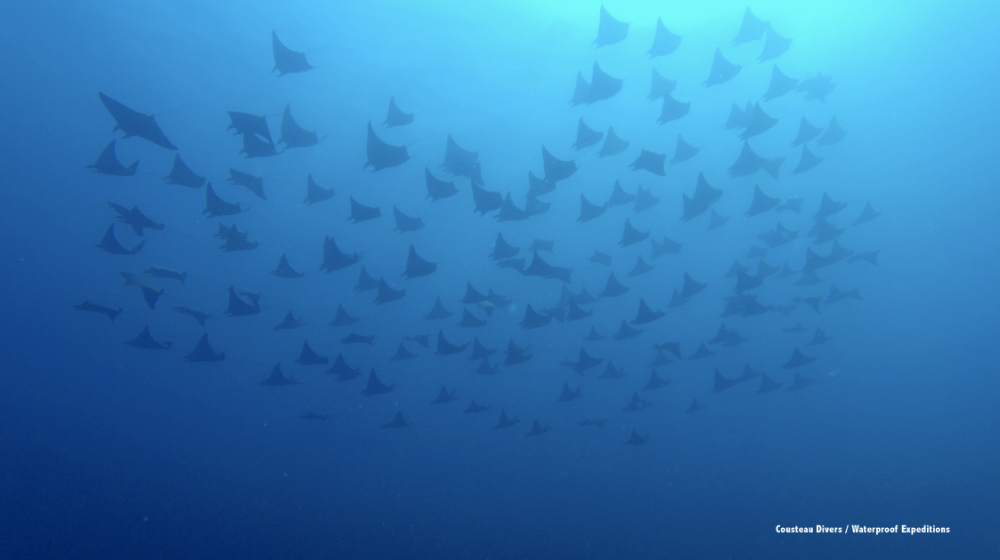
Back in Wolf and Darwin, rivers of fish flow along the rocky seascape against the current. Two white-tip sharks engage in a circular mating dance, the male biting down regularly on the female’s pectoral fins. Out of the deep blue, a group of hammerheads daringly approach me and scatter as soon as I can no longer hold my bubbles… Returning from the dives, dolphins play in the bow of our dingy.
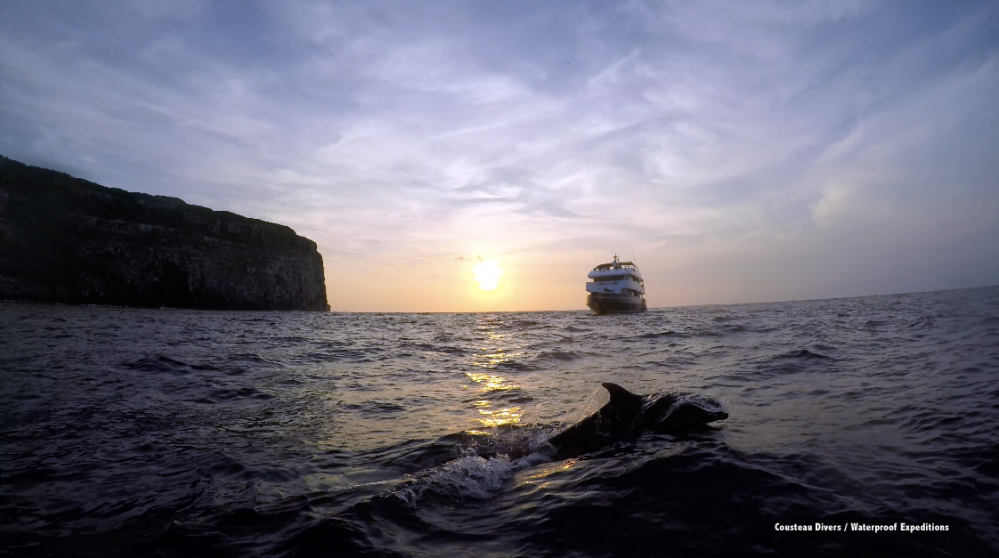
Temperatures varied greatly from site to site, from 19 to 28 degrees Celsius, and again I collected them using the Sensus Ultra and my dive computer as part of Project Hermes. The currents had greatly reduced since the last trip, and overall temperatures were a couple degrees lower. The El-Niño phenomenon seems to be receding here, just as corals begin to bleach on the other side of the planet, in Northern Australia. I leave the Sensus recording device with our guide Jeff, who agrees to using it on his dives year-round, which will provide a more comprehensive data set. This is the first of thirty locations to receive the temperature logger across the world.
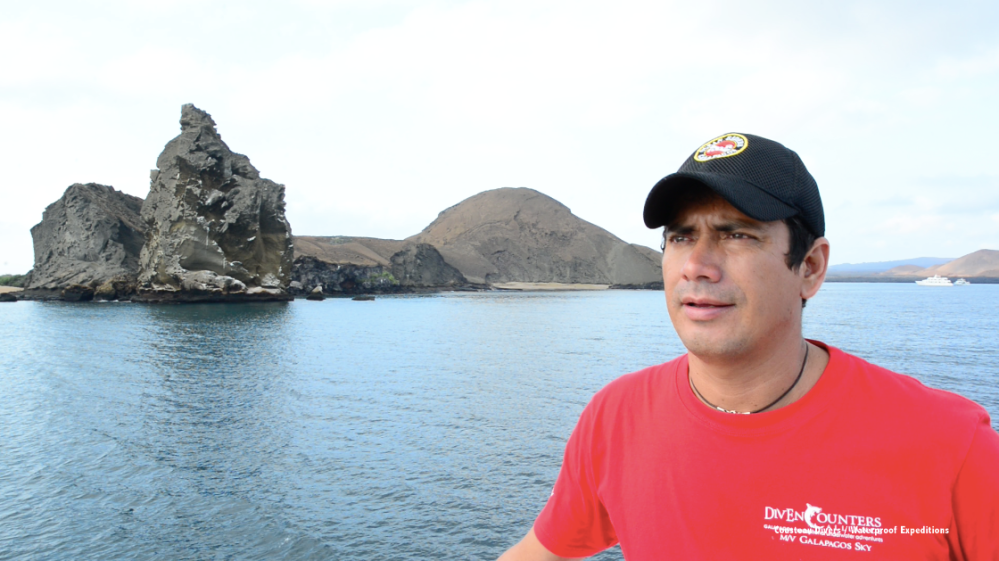
Just as I am zipping up my wetsuit and slipping into my BCD for the next dive, I spot a tiny ship approaching the Sky. Manned by two, it is a fishing craft. The captain hails them. They are perhaps the first poachers of the sanctuary, barely a week after it’s declaration. I can hardly believe the effort they have put into reaching these islands: on their minuscule vessel, they must have sailed for 3 days non-stop in the open sea to reach Wolf, the deck of their boat covered in gasoline containers. The captain tells them that they are not allowed here anymore. They reply that they know, but that their engine broke and that they drifted into the sanctuary… Sure. Today there are only 5 diving operators authorized in the sanctuary, taking turns. That means that at least 2 days a week there is nobody around to report illegal fishing. Our dive guide Jeff says that at least the presence of traditional fishermen dissuaded illegal poachers to enter in the past. The captain of the Sky argues that “traditional” fishermen were sometimes collaborating with poachers.

It seems that despite significant efforts to build consensus and help fishermen reconvert to tourism activities, the actual enforcement of the newly minted Wolf and Darwin sanctuary will be difficult. Let’s hope it’s not another “protection only on paper” and that a new socio-economic balance will be found that allows for meaningful conservation of this precious jewel of the ocean, one of the few remaining.
This concludes the story of the 2016 Cousteau Divers – Waterproof Expeditions Galapagos trip. I leave the islands and return to Europe to pursue my work with IUCN and Cousteau Divers. In the coming weeks, I will release a video compiling the most thrilling moments of the trip. Join me on the next adventure to Tahiti, in July 2017!
~ Pierre-Yves Cousteau
www.waterproof-expeditions.com
For more blogs from Pierre-Yves Cousteau, visit cousteaudivers.wordpress.com.
Blogs
The Ocean Cleanup Breaks 10,000,000 KG Barrier

The Ocean Cleanup, the global non-profit project, has removed a verified all-time total of ten million kilograms (22 million lbs.) of trash from oceans and rivers around the world – approximately the same weight as the Eiffel Tower.
To complete its mission of ridding the oceans of plastic, The Ocean Cleanup uses a dual strategy: cleaning up the Great Pacific Garbage Patch (GPGP) to remove the plastic already afloat in the oceans, while stopping the flow of plastic from the world’s most polluting rivers.
Through cleaning operations in the GPGP and in rivers in eight countries, the cumulative total of trash removed has now surpassed ten million kilograms. This milestone demonstrates the acceleration of The Ocean Cleanup’s impact, while underlining the astonishing scale of the plastic pollution problem and the need for continued support and action.
While encouraging for the mission, this milestone is only a staging point: millions more tons of plastic still pollute our oceans and The Ocean Cleanup intends to continue learning, improving and innovating to solve this global catastrophe.
This announcement comes as governments from around the world meet to continue negotiations to develop a new legally binding instrument to end plastic pollution at INC4 in Ottawa, Canada. Representatives of The Ocean Cleanup will be in attendance and the organization will be urging decision-makers to collaborate towards a comprehensive and ambitious global treaty which addresses plastic at all stages of its life cycle and in all marine environments worldwide, including in areas beyond national jurisdiction.
It is encouraging to see that the need for remediation is reflected in the various options for potential treaty provisions. It is essential that the final treaty contains clear targets for the remediation of legacy plastic pollution, and reduction of riverine plastic emissions.
Tackling plastic pollution requires innovative and impactful solutions. The treaty should therefore incentivize the innovation ecosystem by fostering innovations that make maximal use of data, technology and scientific knowledge – such as those designed and deployed by The Ocean Cleanup.
‘After many tough years of trial and error, it’s amazing to see our work is starting to pay off – and I am proud of the team who has brought us to this point.’ said Boyan Slat, Founder and CEO of The Ocean Cleanup. ‘While we still have a long way to go, our recent successes fill us with renewed confidence that the oceans can be cleaned.’
The Ocean Cleanup was founded in 2013 and captured its first plastic in 2019, with the first confirmed catch in the GPGP coming soon after the deployment of Interceptor 001 in Jakarta, Indonesia. After surpassing one million kilograms of trash removed in early 2022, the non-profit project has since progressed to the third iteration of its GPGP cleaning solution, known as System 03, and a network of Interceptors currently covering rivers in eight countries, with more deployments set for 2024.
About The Ocean Cleanup
The Ocean Cleanup is an international non-profit organization that develops and scales technologies to rid the world’s oceans of plastic. They aim to achieve this goal through a dual strategy: stemming the inflow via rivers and cleaning up the legacy plastic that has already accumulated in the ocean. For the latter, The Ocean Cleanup develops large-scale systems to efficiently concentrate the plastic for periodic removal. This plastic is tracked and traced through DNV’s chain of custody model to certify claims of origin when recycling it into new products. To curb the tide via rivers, The Ocean Cleanup has developed Interceptor™ solutions to halt and extract riverine plastic before it reaches the ocean. Founded in 2013 by Boyan Slat, The Ocean Cleanup now employs a broadly multi-disciplined team of approximately 140. The foundation is headquartered in Rotterdam, the Netherlands.
For more information, visit: theoceancleanup.com and follow @theoceancleanup on social media.
Marine Life & Conservation
Steve Backshall to headline Shark Trust’s flagship event: For the Love of Sharks

Join a host of amazing, shark loving, speakers including Steve Backshall and the Shark Trust team for an evening celebrating shark conservation at the Royal Geographical Society in London this November.
Date: 29th November 2024
Time: 6-10pm
Location: Royal Geographical Society, London
Tickets: https://www.sharktrust.org/Event/flos24
The event will be a celebration of all things shark. Those lucky enough to get hold of tickets will hear from engaging guest speakers with a passion for sharks.
The line-up includes (*subject to change if unforeseen circumstances arise)
Steve Backshall: One of television’s busiest presenters, BAFTA award-winning wildlife expert Steve has been passionate about the wild world ever since he was young.
Steve’s impressive TV career has taken him all around the world, investigating a wide array of species and environments. Steve has filmed over 100 hours of children’s wildlife programmes with the BAFTA award winning Deadly 60 franchise and recently, with Sky Nature, for his new series ‘Whale with Steve Backshall’. He has been a patron for the Shark Trust for 10 years.
Simon Rogerson: is a photojournalist specialising in natural history, diving and the sea.
He is editor of SCUBA magazine, the official journal of the British Sub-Aqua Club. Simon started his career as a crime reporter but gravitated towards his ‘less depressing’ interest in underwater exploration, joining the staff of DIVE magazine in 1999. In 2005 he was named ‘Editor of the Year’ in the PPA’s Independent Publishing Awards. Simon also works as a freelance writer, contributing frequently to the Sunday Times and Telegraph, in addition to BBC Wildlife, Esquire, and a host of international diving magazines. He is the author of a book, Dive Red Sea, published by Ultimate Sports. Now based in Berkshire, Simon has been a Patron of the Shark Trust for 20 years.
More speakers to be announced soon. Head to the Shark Trust website to learn more.
The evening will also allow guests the final chance to see the Oceanic 31, shark art exhibition. Some of the artwork will be auctioned/raffled at the event, while the rest will be auctioned online to raise money for the Shark Trust Oceanic Programme.
For the Love of Sharks is an evening with something for everyone who is interested and fascinated by sharks. Join the Shark Trust, their Patrons, Trustees and Staff, along with a host of supporters for this celebration of shark conservation.
For more information or to buy a ticket: https://www.sharktrust.org/Event/flos24
-

 News3 months ago
News3 months agoCapturing Critters in Lembeh Underwater Photography Workshop 2024: Event Roundup
-

 Marine Life & Conservation Blogs3 months ago
Marine Life & Conservation Blogs3 months agoCreature Feature: Swell Sharks
-

 Blogs2 months ago
Blogs2 months agoMurex Resorts: Passport to Paradise!
-

 Blogs2 months ago
Blogs2 months agoDiver Discovering Whale Skeletons Beneath Ice Judged World’s Best Underwater Photograph
-

 Gear Reviews3 weeks ago
Gear Reviews3 weeks agoGEAR REVIEW – Revolutionising Diving Comfort: The Sharkskin T2 Chillproof Suit
-

 Gear Reviews3 months ago
Gear Reviews3 months agoGear Review: Oceanic+ Dive Housing for iPhone
-

 Marine Life & Conservation2 months ago
Marine Life & Conservation2 months agoSave the Manatee Club launches brand new webcams at Silver Springs State Park, Florida
-

 News2 months ago
News2 months agoPADI Teams Up with Wellness Brand Neuro to Drive Ocean Change and Create a Blue State of Mind





